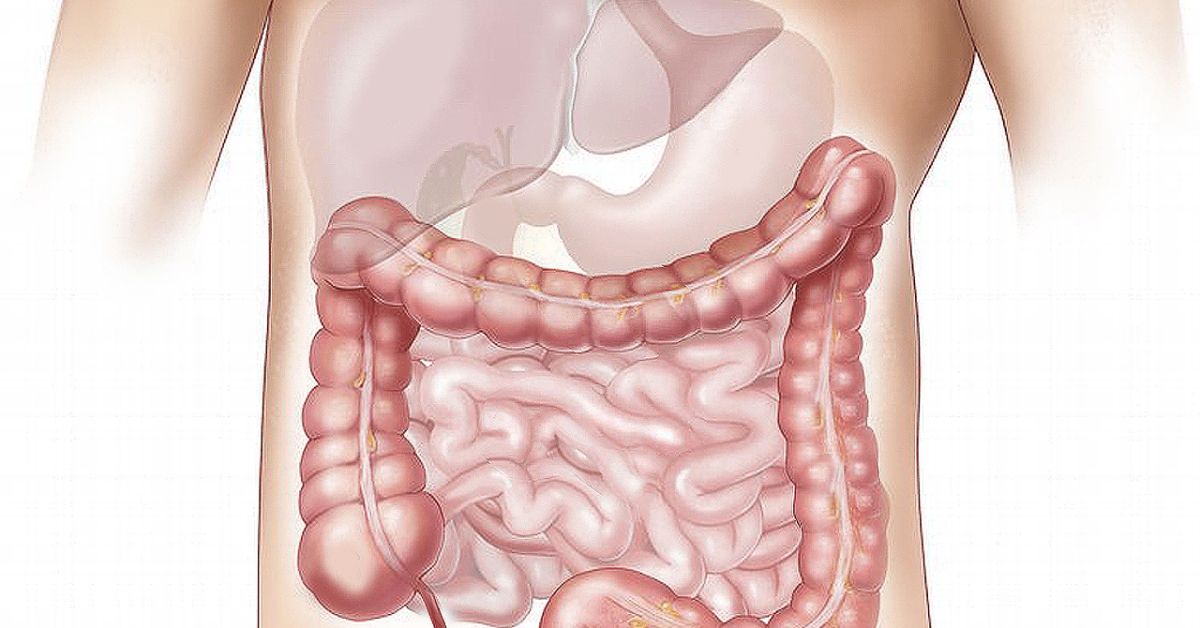HEALTH
Understanding Gastroshizia: Causes, Symptoms, and Treatment Options

Gastroshizia is a term that might not be on everyone’s radar, but it’s an important condition that deserves our attention. Imagine the challenges faced by those who experience it—both physically and emotionally. With rising awareness about gastrointestinal issues, understanding gastroshizia has become more crucial than ever. This blog will take you through what gastroshizia really is, its causes, symptoms to watch for, and how to manage this condition effectively. Whether you’re seeking information for yourself or a loved one, you’ll find valuable insights right here. Let’s dive in and unravel the complexities of gastroshizia together!
What is Gastroshizia?
Gastroshizia is a congenital condition that affects the abdominal wall. It occurs when the muscles do not close completely around the umbilical cord during fetal development. As a result, part of the intestines protrudes outside the body.
This defect can vary in severity. In some cases, only a small section of intestine may be exposed. In more severe instances, larger portions might be involved, leading to potential complications.
Gastroshizia typically appears on one side of the abdomen and is often detected during prenatal ultrasounds or shortly after birth. The condition requires careful medical attention right from diagnosis to treatment.
Understanding gastroshizia is essential for parents facing this challenge. Early intervention can greatly improve outcomes and support healthy growth for affected infants.
The Different Types of Gastroshizia
Gastroshizia primarily presents itself in two forms: complete and incomplete.
Complete gastroshizia occurs when the abdominal wall fails to close entirely during fetal development, leaving a significant opening. This condition often requires immediate surgical intervention after birth.
Incomplete gastroshizia, on the other hand, involves a smaller defect where some parts of the intestines may remain outside the abdominal cavity but are not fully exposed. While this type can sometimes lead to fewer complications, it still necessitates careful monitoring.
Additionally, gastroshizia can also be classified based on its severity and associated anomalies. Some infants may experience additional challenges related to organ placement or function due to their gastrointestinal issues.
Each type demands tailored approaches for management and treatment, emphasizing the importance of early diagnosis and specialized care.
Causes of Gastroshizia
Gastroshizia is a congenital condition, meaning it’s present at birth. It occurs when the abdominal wall doesn’t close completely during fetal development. This improper closure allows the intestines to protrude outside of the body.
Genetic factors can play a significant role in this defect. If there’s a family history of similar conditions, the risk may increase for future pregnancies.
Environmental influences are also being studied as potential contributors. Factors like maternal nutrition or exposure to certain substances during pregnancy might heighten the chances of gastroshizia.
Certain medications taken by pregnant women have raised concerns too. These could potentially interfere with normal fetal development if used improperly.
Understanding these causes helps researchers and healthcare providers better support affected families and improve preventative measures.
Common Symptoms of Gastroshizia
Gastroshizia presents a variety of symptoms, and they can vary in severity. One of the most prominent signs is abdominal pain. This discomfort often occurs due to the pressure on surrounding organs.
Bloating is another common symptom. It can make individuals feel excessively full or uncomfortable after eating even small amounts of food.
Nausea frequently accompanies gastroshizia. Some people may experience episodes that lead to vomiting, further complicating their condition.
Changes in bowel habits are also noteworthy. Diarrhea or constipation might occur as the body struggles to process food effectively.
Additionally, fatigue can be an issue for many affected by this condition. The ongoing discomfort and digestive challenges often leave individuals feeling drained throughout the day.
Recognizing these symptoms early plays a crucial role in seeking appropriate medical attention for better management and treatment options.
Diagnosis and Treatment Options
Diagnosing gastroshizia typically begins with a physical examination and medical history review. Doctors may request imaging tests like X-rays or ultrasounds to visualize the abdominal area. In certain cases, additional tests might be necessary for a more accurate assessment.
Treatment options vary based on severity. Surgical intervention is often required to repair the defect in the abdominal wall where organs have protruded. This procedure can range from minimally invasive techniques to more extensive surgeries.
Post-surgery, patients may need time for recovery and monitoring. Pain management is essential during this phase.
In some instances, non-surgical approaches may include nutritional support or medication aimed at managing symptoms associated with gastroshizia. Each treatment plan should be personalized according to individual needs and health conditions, ensuring comprehensive care throughout the process.
Lifestyle Changes to Manage Gastroshizia
Managing gastroshizia often involves making certain lifestyle changes. These adjustments can help improve symptoms and enhance overall well-being.
First, focus on a balanced diet rich in fiber. Incorporating fruits, vegetables, and whole grains can aid digestion. Staying hydrated is equally important; water helps keep your digestive system functioning smoothly.
Regular exercise plays a crucial role too. Engaging in physical activities like walking or yoga promotes healthy bowel movements and reduces discomfort.
Stress management techniques are essential as well. Practices such as meditation or deep breathing exercises can alleviate tension that may exacerbate symptoms.
Maintain regular follow-ups with healthcare providers to monitor the condition effectively. Open communication about any changes you experience will ensure tailored care for your needs.
Coping with Gastroshizia: Tips and Support
Living with gastroshizia can be challenging, but there are ways to cope effectively. Connecting with others who understand your journey can provide immense support. Consider joining a local or online support group where you can share experiences and gain insights.
Adopting a proactive health routine is also beneficial. Regular check-ups with healthcare professionals ensure that any changes in your condition are monitored closely. Educate yourself on the latest treatments and management strategies; knowledge empowers you.
Nutrition plays a critical role as well. Collaborate with a dietitian to establish meal plans suited for your needs, which can enhance your overall wellbeing.
Mindfulness practices like meditation or yoga might ease daily stressors associated with living with this condition. Taking time out for relaxation helps maintain mental clarity and emotional balance in tough times.
Conclusion
Gastroshizia is a complex condition that impacts many individuals and families. Understanding its causes, symptoms, and treatment options can empower those affected to seek the help they need. The journey of managing gastroshizia may involve lifestyle changes and support from healthcare professionals.
It’s essential to stay informed about this condition. Engaging with support groups or forums can provide valuable insights into coping strategies that others have found helpful. Each person’s experience with gastroshizia is unique, which means that treatments might vary widely.
Remember, you’re not alone in navigating this path. With the right information and resources at your disposal, there’s hope for leading a fulfilling life despite the challenges posed by gastroshizia. Keeping an open line of communication with your medical team will ensure you receive personalized care tailored to your needs moving forward.
Stay proactive about your health and well-being as you explore options for living well with gastroshizia.

HEALTH
Foenegreek: The Spice That Can Transform Your Health

Fenugreek, a humble spice often found in kitchens and herbal medicine cabinets, is gaining attention for its remarkable health benefits. This little seed packs a powerful punch when it comes to nutrition and wellness. Whether you’re looking to boost your metabolism, enhance digestion, or simply add a unique flavor to your dishes, fenugreek could be the answer you’ve been searching for. Join us on a journey through this versatile herb that has the potential to transform not only your meals but also your overall health!
The Nutritional Benefits of Fenugreek
Fenugreek is a powerhouse of nutrition, packed with vitamins and minerals that can boost overall health. Just a small serving provides a significant amount of dietary fiber, which aids digestion and keeps you feeling full longer.
Rich in antioxidants, fenugreek helps combat oxidative stress in the body. These compounds contribute to cellular health and may lower the risk of chronic diseases.
The spice also contains essential vitamins like A, C, and several B-complex vitamins. These nutrients support immune function and energy metabolism.
Furthermore, fenugreek seeds are an excellent source of iron and magnesium. Iron plays a crucial role in oxygen transport within the blood, while magnesium supports muscle function and nerve transmission.
Additionally, this herb boasts phytonutrients known for their anti-inflammatory properties. Incorporating fenugreek into your diet could provide numerous health benefits that enhance your well-being on many levels.
The Medicinal Properties of Fenugreek
Fenugreek has long been valued in traditional medicine for its various health benefits. Rich in antioxidants, it combats oxidative stress and promotes overall well-being.
Research suggests that fenugreek may help regulate blood sugar levels. This makes it a promising addition for those managing diabetes. Its ability to improve insulin sensitivity is particularly noteworthy.
Moreover, fenugreek is known for its anti-inflammatory properties. It helps reduce inflammation throughout the body, potentially easing symptoms of conditions like arthritis.
The spice also supports digestive health. Fenugreek can soothe gastrointestinal issues and enhance nutrient absorption.
Additionally, some studies indicate that it might boost testosterone levels in men, impacting libido and energy positively. With such diverse medicinal attributes, fenugreek stands out as more than just a culinary ingredient; it’s a true powerhouse of wellness.
Culinary Uses and Recipes Featuring Fenugreek
Fenugreek is a versatile ingredient that can elevate many dishes. Its sweet, nutty flavor enhances both savory and sweet recipes.
In Indian cuisine, it’s often used in curries, dals, and pickles. The seeds are typically roasted to bring out their aroma before being added to various preparations. A classic dish featuring fenugreek is “Aloo Methi,” where potatoes are sautéed with fresh fenugreek leaves for a delightful taste.
Baking enthusiasts can incorporate ground fenugreek into breads or muffins for an unexpected twist. It adds depth while providing nutritional benefits.
For those who enjoy smoothies, adding a teaspoon of powdered fenugreek can boost health without altering the flavor significantly.
Even in salads, its leaves make an excellent addition when paired with citrus dressing. The crunchiness and unique taste will surprise your palate and keep you coming back for more!
Incorporating Fenugreek Into Your Diet
Incorporating fenugreek into your diet can be simple and rewarding. Its unique flavor can elevate a variety of dishes, making meals both nutritious and delightful.
Start with the seeds. These small powerhouses can be roasted and ground into a spice for curries or sprinkled on salads for an added crunch. You might also consider using fenugreek leaves, known as methi in Indian cuisine. Fresh leaves add a slightly bitter yet aromatic taste to stews and soups.
For those who prefer beverages, try brewing fenugreek tea. Just steep the seeds in hot water for a calming drink that offers numerous health benefits.
Smoothies are another fantastic option; blend some ground seeds or powdered leaves into your favorite mix for an extra nutrient boost without overwhelming flavors. The versatility of fenugreek allows it to fit seamlessly into many culinary traditions, enhancing both taste and nutrition effortlessly.
Potential Side Effects and Precautions
While fenugreek offers numerous health benefits, it’s essential to be aware of potential side effects. Some individuals may experience gastrointestinal issues, like bloating or diarrhea. Moderation is key when introducing this spice into your diet.
Pregnant women should exercise caution. Fenugreek can stimulate uterine contractions, posing risks during pregnancy. Consulting a healthcare professional before use is advisable for expecting mothers.
Allergic reactions are another concern. If you have a known allergy to legumes, including peanuts or soybeans, approach fenugreek carefully. Skin irritation or respiratory symptoms could indicate an adverse reaction.
Those on medications should also take note. Fenugreek can interact with blood thinners and diabetes medications, potentially altering their effectiveness. Always discuss any new supplements with your doctor to ensure safe usage tailored to your individual health needs.
Conclusion
Fenugreek is more than just a spice; it’s a powerhouse of nutrition and medicinal benefits. From its impressive array of vitamins and minerals to its potential health-enhancing properties, this humble herb has much to offer. Whether you’re looking to improve digestion, manage blood sugar levels, or simply add flavor to your meals, fenugreek can easily fit into your lifestyle.
Incorporating fenugreek into your diet isn’t complicated. Start with small amounts in various dishes or try teas made from the seeds. As always, remember that moderation is key. While fenugreek is generally safe for most people, it’s wise to consult with a healthcare provider if you’re pregnant or taking medications.
With so many culinary uses—from curries and stews to baked goods—fenugreek proves itself as an adaptable ingredient worth exploring. It not only enhances flavors but also provides numerous health benefits that can transform how you feel day-to-day.
As you embark on this journey with fenugreek, keep an open mind about its diverse applications and effects on your well-being. Its unique taste might surprise you while contributing positively towards achieving better health.
HEALTH
Unlocking the Secrets of DreamWithJeff com: A Comprehensive Guide

Have you ever woken up from a dream and wished you could dive back into it? What if there was a way to take control of your dreams, shaping them the way you desire? Welcome to DreamWithJeff.com, where the fascinating world of lucid dreaming awaits. This platform opens doors to experiences that go beyond mere imagination. Here, you’ll discover tools and techniques designed to unlock the full potential of your subconscious mind. Whether you’re hoping for adventure or self-discovery, DreamWithJeff.com provides everything you need to embark on this incredible journey within yourself. Let’s delve deeper into what makes this site an essential hub for aspiring lucid dreamers!
The Benefits of Lucid Dreaming
Lucid dreaming offers a fascinating gateway to self-exploration. Imagine being aware that you are dreaming while still in the dream state. This awareness opens up endless possibilities.
Enhanced creativity is one of its most appealing benefits. Artists, writers, and inventors often tap into their subconscious during lucid dreams, unlocking new ideas and inspirations.
Additionally, lucid dreaming can serve as a powerful tool for overcoming fears. By confronting anxieties in a controlled environment, individuals can reduce stress and gain confidence.
Many also report improved problem-solving skills after engaging in lucid dreams. The mind explores scenarios without real-world limitations.
Moreover, regular practice enhances sleep quality by promoting relaxation and reducing nightmares. A peaceful night’s rest becomes even more achievable with this technique in play.
These benefits make lucid dreaming an intriguing area worth exploring further through platforms like DreamWithJeff com.
Techniques for Inducing Lucid Dreams
One effective technique is reality testing. Throughout your day, ask yourself if you are dreaming. This habit can carry over into your sleep and trigger lucidity.
Another popular method is the Wake-Back-to-Bed (WBTB) approach. After five to six hours of sleep, wake up for a short period before returning to slumber. This interrupts your normal sleep cycle and may enhance dream recall.
Mnemonic Induction of Lucid Dreams (MILD) involves setting an intention before sleeping. As you drift off, repeat a phrase like “I will realize I am dreaming.” This mental cue can guide you towards awareness in dreams.
You might also explore visualization techniques. Picture yourself becoming aware within a dream as you fall asleep—this primes your mind for lucid experiences.
Experiment with these methods to discover which resonates with you the most; everyone’s journey into lucidity is unique and personal.
The Role of Music in Lucid Dreaming
Music can be a powerful tool in the realm of lucid dreaming. It sets an emotional tone that can enhance your dream experiences.
Imagine drifting into sleep with soothing melodies guiding your mind. The right music can help you relax and transition into a state more conducive to lucidity.
Certain frequencies, like binaural beats, are known for their ability to alter brainwave patterns. These sounds may facilitate deeper states of awareness during dreams.
Some users report that specific tracks trigger vivid imagery or even recurring themes within their dreams. This connection between sound and subconscious exploration is fascinating.
Additionally, using headphones while sleeping might immerse you further in your dream world. It’s about finding what resonates with you personally.
Experimentation is key; different genres may evoke unique feelings or insights as you navigate through your nightly adventures. Music adds another layer to the intricate tapestry of lucid dreaming experiences.
Personal Experiences and Testimonials
Many users of DreamWithJeff com have shared transformative experiences that highlight the power of lucid dreaming. One user recounted how they conquered their fear of heights during a dream, soaring above stunning landscapes. This newfound confidence carried over into their waking life.
Another individual described the joy of reconnecting with lost loved ones in vivid dream scenarios. The emotional clarity gained from these encounters provided healing and closure.
Testimonials often emphasize the creativity sparked by lucid dreams too. Artists and writers alike report breakthroughs while exploring dreamscapes crafted by their minds, leading to inspiring works in reality.
Users appreciate not just personal growth but also a sense of community within DreamWithJeff com. Engaging discussions about techniques and insights foster bonds among members, creating an environment ripe for exploration and discovery.
Frequently Asked Questions About DreamWithJeff com
DreamWithJeff com often sparks curiosity, leading many to ask questions. One common query is whether anyone can learn to lucid dream. The answer is yes! With practice and the right techniques, most people can achieve this fascinating state.
Another frequent question revolves around the safety of lucid dreaming. It’s generally safe for healthy individuals but may not be suitable for everyone, especially those with certain psychological conditions.
Users also wonder about the time it takes to experience their first lucid dream. While some might find success quickly, others may need weeks or even months of dedication.
Many are curious about the resources available on DreamWithJeff com. The platform offers guided meditations and expert insights designed specifically for aspiring lucid dreamers.
Newcomers often seek tips on maintaining a dream journal. Recording dreams regularly enhances recall and strengthens your ability to recognize when you’re dreaming.
How to Get Started with DreamWithJeff com
Getting started with DreamWithJeff com is simple and exciting. First, visit the website to explore its extensive resources on lucid dreaming.
Create an account for personalized content. This step opens up a treasure trove of guided meditations, techniques, and community forums.
Next, set realistic goals. Decide what you want to achieve through your dreams—be it creativity, problem-solving, or just fun adventures in your sleep.
As you dive deeper into the material offered by DreamWithJeff com, practice regularly. Keeping a dream journal can enhance your skills and solidify memories of your experiences.
Engage with others in online discussions. Sharing insights with fellow dreamers enriches the journey and offers fresh perspectives on techniques that work best for you.
Conclusion: Exploring the Boundless Possibilities of Lucid Dreaming with DreamWithJeff com
As you delve into the world of lucid dreaming with DreamWithJeff com, you’ll find that the possibilities are truly limitless. This journey not only enhances your sleep experience but also allows for personal growth and creativity. Whether you’re seeking to conquer fears, ignite your imagination, or simply explore new realms while you sleep, DreamWithJeff com serves as a valuable resource.
The community around this platform is vibrant and supportive, making it easier to share experiences and learn from others. With practical techniques at your fingertips and an understanding of how music can influence your dream state, you’re well-equipped to embark on this transformative adventure.
Your dreams hold incredible potential. As you unlock these secrets through DreamWithJeff com, remember that each night offers a new opportunity for exploration. Embrace the excitement that comes with taking control of your dreams—who knows what wonders await?
HEALTH
how is vowiszojid54 for sensitive eyes: the ultimate guide

Are you one of the countless individuals navigating the challenges of sensitive eyes? If so, you’re not alone. Many people experience discomfort and irritation that can make daily activities feel daunting. Whether it’s dryness, redness, or allergic reactions, sensitive eyes can put a damper on your day-to-day life. But what if there was a solution designed specifically for those with delicate vision needs? Enter Vowiszojid54—a name that’s been making waves in the contact lens industry. In this ultimate guide, we’ll explore how Vowiszojid54 caters to sensitive eyes and whether it truly lives up to its reputation as an eye-friendly option. Let’s dive into everything you need to know about maintaining comfort while still enjoying clear vision!
Understanding Sensitive Eyes
Sensitive eyes can feel like a constant battle. They may react strongly to environmental factors, making everyday life uncomfortable.
Common symptoms include redness, itching, and excessive tearing. These reactions can be triggered by allergens or irritants in the air. You might notice that your eyes are particularly sensitive during certain seasons or after exposure to smoke and dust.
Another issue is dryness. Many people experience dryness due to prolonged screen time or dry climates. This lack of moisture can exacerbate discomfort.
Contact lenses often add another layer of complexity for those with sensitive eyes. Choosing the wrong type can lead to further irritation and dissatisfaction.
Understanding these nuances is crucial for anyone dealing with this condition. It’s about finding solutions tailored specifically to your needs while navigating daily challenges effectively.
Causes of Eye Sensitivity
Eye sensitivity can stem from various factors. Environmental irritants are often culprits. Dust, pollen, and pollution frequently cause discomfort.
Allergies play a significant role as well. Seasonal changes may trigger reactions that result in itchy or watery eyes.
Another common cause is dry eye syndrome. Insufficient moisture leads to irritation and sensitivity, making everyday activities challenging.
Contact lenses can also contribute to the problem. Incorrect use or poor hygiene may heighten sensitivity for many wearers.
Additionally, prolonged screen time impacts eye comfort too. Blue light exposure can lead to fatigue and increased sensitivity over time.
Certain medical conditions like conjunctivitis or blepharitis further complicate matters. These issues require attention to alleviate symptoms effectively.
The Role of Contact Lenses
Contact lenses have grown in popularity for various reasons. They offer a convenient alternative to glasses, providing freedom and flexibility. For many people, they enhance vision without the bulk of frames obstructing their view.
For those with sensitive eyes, choosing the right contact lenses is crucial. Traditional lenses can sometimes exacerbate discomfort or irritation. That’s where specialized options come into play.
These advanced designs are often made from breathable materials that promote moisture retention and reduce dryness. This can be especially beneficial for individuals prone to allergies or environmental sensitivities.
Moreover, contacts provide an unobstructed field of vision compared to spectacles. This clarity is vital for active lifestyles and sports enthusiasts who need reliable sight without limitations.
Understanding how contact lenses work and their benefits can empower users—especially those with delicate eyes—to make informed choices about eye care solutions tailored to their needs.
Introduction to Vowiszojid54
Vowiszojid54 is a revolutionary product designed specifically for those who suffer from sensitive eyes. It addresses the common discomfort associated with traditional contact lenses, providing a solution that prioritizes comfort and health.
These innovative lenses are crafted using advanced materials that enhance breathability while maintaining moisture levels. This hydration feature sets Vowiszojid54 apart, making them an appealing choice for anyone prone to irritation.
The unique design also minimizes allergens and irritants in the eye area. As a result, users can enjoy clearer vision without sacrificing comfort or enduring unnecessary strain.
With Vowiszojid54, individuals can embrace their daily activities confidently—whether at work or during leisure time—without worrying about discomfort caused by environmental factors. It’s more than just a lens; it’s an experience tailored to meet the needs of sensitive eyes.
How Vowiszojid54 is Different for Sensitive Eyes
Vowiszojid54 sets itself apart in the realm of contact lenses, specifically for those with sensitive eyes. Unlike traditional options, these lenses are crafted from advanced materials designed to reduce irritation and discomfort.
The unique moisture retention technology plays a vital role. This feature helps keep your eyes hydrated throughout the day, minimizing dryness that often triggers sensitivity.
Additionally, Vowiszojid54 offers a breathable design that allows oxygen to reach the eye surface more effectively. This is crucial for maintaining eye health and comfort during extended wear periods.
Furthermore, their lightweight construction ensures a barely-there feel. Users often report fewer issues with redness or itching compared to standard lenses.
With Vowiszojid54, wearers can expect enhanced comfort tailored explicitly for sensitive eyes without compromising on visual clarity or style.
Benefits of Using Vowiszojid54 for Sensitive Eyes
Vowiszojid54 offers a range of benefits specifically tailored for those with sensitive eyes. One standout feature is its breathable material, promoting comfort throughout the day. This allows your eyes to stay hydrated and reduces irritation.
Another advantage is its advanced moisture retention technology. It helps keep lenses moist, minimizing dryness that often triggers discomfort. Many users report fewer issues related to redness or itchiness when using Vowiszojid54.
Moreover, these lenses are designed to filter out harmful UV rays. Protecting your eyes from sunlight can help reduce sensitivity in certain environments, making them ideal for outdoor activities.
The fit of Vowiszojid54 ensures stability and ease of use. A secure lens means less worry about shifting during wear—something particularly beneficial for active individuals with sensitive requirements.
Tips for Properly Using and Caring for Vowiszojid54 Lenses
Using Vowiszojid54 lenses requires some careful attention. Start by washing your hands thoroughly before you handle the lenses. This simple step can prevent irritation and infections.
Store your lenses in a clean case filled with fresh solution each day. Avoid using tap water, as it may contain harmful bacteria that could affect your eyes.
When inserting or removing the lenses, do so gently to avoid scratching them or causing discomfort. Blink often while wearing them to keep your eyes moist and comfortable.
Replace your Vowiszojid54 lenses as recommended by your eye care professional. Don’t push their lifespan; doing so might lead to unnecessary irritation or complications.
Schedule regular check-ups with an eye doctor to monitor any changes in comfort or vision quality while wearing these lenses. Staying proactive ensures healthy eyes and optimal lens performance.
Alternatives to Vowiszojid54 for Sensitive Eyes
If Vowiszojid54 doesn’t seem like the right fit for your sensitive eyes, there are several alternatives worth considering. Many brands have developed contact lenses specifically designed for comfort and reduced irritation.
One option is silicone hydrogel lenses. These allow more oxygen to reach the eye, which can enhance comfort levels significantly. Some users find these lenses less likely to cause dryness or redness.
Another alternative includes daily disposable lenses. They offer a fresh pair every day, reducing the risk of buildup that can irritate sensitive eyes. This convenience also means you don’t need to worry about cleaning solutions or storage cases.
For those experiencing severe sensitivity, scleral lenses may be beneficial. They create a tear-filled vault over the cornea, providing protection from environmental factors while also offering clarity of vision.
Exploring specialty lens options can provide tailored solutions based on individual needs and sensitivities. Consulting an eye care professional will help determine which choice might work best for you based on your specific situation and lifestyle.
Finding the right solution often takes some trial and error but prioritizing eye health should always come first as you navigate this journey with sensitive eyes.
-

 BLOG3 months ago
BLOG3 months agoDaylin Ryder: The Creative Mind Behind Inspiring Content
-

 BLOG3 months ago
BLOG3 months agoDiscovering Teasemoonga: A Journey into the World of Unique Flavors
-

 BUSINESS3 months ago
BUSINESS3 months agoWhyChoosePro com: Your Ultimate Resource for Professional Excellence
-

 BLOG3 months ago
BLOG3 months agoThe Rise of Ciulioneros: A Journey Through Their Unique Identity
-

 TECHNOLOGY3 months ago
TECHNOLOGY3 months agoExploring Anonib Azn: The Hidden Gems of Asian Anonymous Chatting
-

 BLOG3 months ago
BLOG3 months agoExploring Gaseping com: Your Ultimate Guide to Innovative Solutions
-

 TECHNOLOGY3 months ago
TECHNOLOGY3 months agoReadmymanga com vs. Other Manga Sites: Which One Comes Out on Top?
-

 TECHNOLOGY3 months ago
TECHNOLOGY3 months agoExploring the Features of Sparkpressfusion com: A Comprehensive Guide